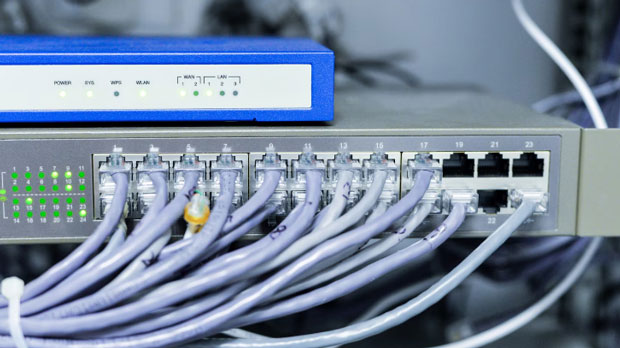In today’s digital landscape, maintaining privacy and anonymity while browsing the internet has become more important than ever. One of the tools commonly used for this purpose is proxies. Proxy services can help mask a user's IP address, providing a layer of security and privacy. While both free and premium proxies serve this purpose, the differences in performance, reliability, and security are vast. This article delves into the advantages of premium proxies over free proxies, highlighting why opting for a premium service can be beneficial for businesses and individuals alike. 1. Speed and PerformanceOne of the most significant advantages of premium proxies over free ones is speed and performance. Premium proxies are built on high-quality, dedicated servers designed to handle large volumes of data traffic, ensuring fast and stable connections. Free proxies, on the other hand, often rely on shared servers with limited bandwidth, which can result in slower speeds, increased latency, and frequent disconnections.Premium proxies usually have multiple locations across the globe, allowing users to choose the nearest server for faster data transfer speeds. Furthermore, these proxies are optimized to handle heavy traffic, making them ideal for businesses and individuals who need to perform tasks such as web scraping, social media management, or online gaming.2. Security and PrivacySecurity is a crucial concern when using proxies. Free proxies may expose users to several risks, including malware, data theft, or surveillance. Since free proxy providers often do not invest in proper encryption or secure protocols, they may put your personal information at risk. Additionally, free proxy services may log your browsing data, which can be sold to third parties or used to track your online activity.Premium proxies, on the other hand, offer robust security features such as encryption, anonymity, and secure tunneling protocols (e.g., HTTPS and SOCKS5). They ensure that all data passed through the proxy is encrypted, protecting sensitive information from hackers and unauthorized entities. Many premium services also have no-logs policies, ensuring that your browsing data is not stored or shared.3. Reliability and UptimeReliability is another area where premium proxies excel. Since premium proxy providers invest in high-quality infrastructure and monitoring systems, their proxies are generally more reliable with minimal downtime. These proxies are hosted on dedicated servers, reducing the chances of server crashes or maintenance interruptions.Free proxies, by contrast, often suffer from poor reliability. They are typically hosted on shared networks, meaning that when many users connect to the same server, the connection becomes unstable or unreliable. Free proxies are also more likely to face downtime because they lack proper monitoring and support systems.4. Customer SupportCustomer support is another important aspect to consider when choosing between free and premium proxies. Premium proxy services typically provide dedicated customer support teams available 24/7 to resolve any issues that may arise. Whether it’s troubleshooting connection problems, assisting with setup, or providing advice on how to use the proxies effectively, premium proxy services prioritize customer satisfaction.Free proxy providers, on the other hand, generally offer little to no customer support. If you encounter any issues with a free proxy, you may have to resort to troubleshooting on your own or rely on online forums for assistance. This lack of support can lead to frustration, especially when dealing with complex proxy configurations or troubleshooting errors.5. No IP BlacklistingOne of the most significant issues with free proxies is the high likelihood of IP blacklisting. Since free proxies are often used by many people for activities like web scraping, accessing restricted content, or bypassing geo-blocks, the IP addresses associated with these proxies are more likely to be blacklisted by websites and services. This means that users may experience frequent access restrictions or complete blocking when using free proxies.Premium proxies, in contrast, typically offer a higher level of anonymity and avoid IP blacklisting. With premium services, users often have access to a large pool of IP addresses, reducing the risk of any one IP being flagged. Additionally, premium proxy providers use advanced IP rotation techniques to prevent their IPs from being blocked, ensuring smooth and uninterrupted access to websites and online services.6. Geo-Targeting and FlexibilityPremium proxies offer users the ability to choose from a wide range of locations across different countries, which is particularly useful for tasks such as market research, accessing geo-restricted content, or managing multiple social media accounts. Premium services allow users to select specific IP locations, providing greater control over online activities.Free proxies often have limited locations, and the IP addresses are often located in countries with strict censorship or poor internet infrastructure. This can limit the effectiveness of free proxies for tasks like accessing region-specific content or conducting online research in different markets.7. ScalabilityFor businesses and users who require multiple proxies for large-scale operations, premium proxies offer scalability that free proxies cannot match. Premium proxy providers often offer plans that allow users to scale up their proxy usage by adding more IP addresses or bandwidth as needed. This flexibility is ideal for businesses that need to scrape data from multiple sources, manage numerous social media accounts, or handle other tasks requiring large amounts of data traffic.Free proxies typically have limited capacity, making them unsuitable for scaling up operations. As the number of users increases, the quality and performance of free proxies tend to deteriorate, limiting their usefulness for serious or long-term projects.8. No Ads or Other DistractionsFree proxy services often come with ads or other distractions that can interfere with your browsing experience. These ads can slow down your connection, cause pop-up interruptions, and even lead to malware if you click on malicious ads. Free proxies rely on advertising revenue to stay operational, which often results in a frustrating user experience.Premium proxies, on the other hand, are ad-free and provide a seamless browsing experience without interruptions. Since users pay for the service, there is no need for ads, allowing for a smoother and more professional user experience.Conclusion: The Clear Edge of Premium ProxiesIn conclusion, while free proxies may seem appealing due to their no-cost nature, they come with significant drawbacks in terms of speed, security, reliability, and overall user experience. Premium proxies, on the other hand, offer a range of advantages, including faster speeds, better security, reliable uptime, strong customer support, and a more professional service overall.For businesses and individuals who value privacy, security, and a high level of performance, investing in premium proxies is a wise decision. Whether you need proxies for web scraping, social media management, or simply to maintain your online privacy, premium proxies provide a far superior solution compared to their free counterparts. By choosing a premium proxy service, users can ensure that their online activities remain secure, efficient, and uninterrupted, making it a worthwhile investment for those who require consistent and high-quality proxy services.
Oct 11, 2025


































































